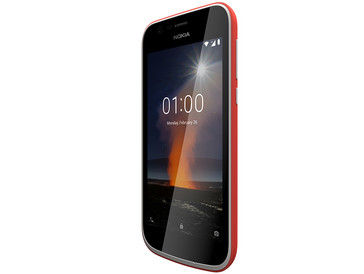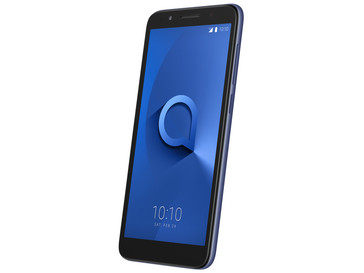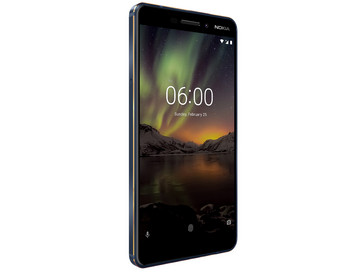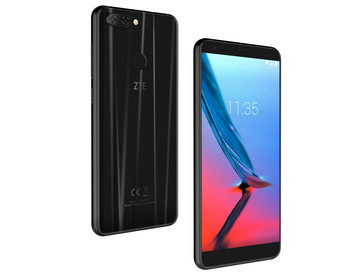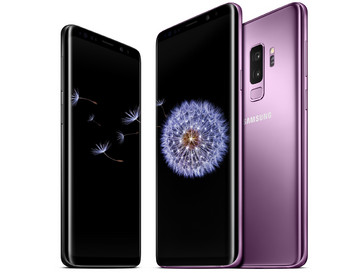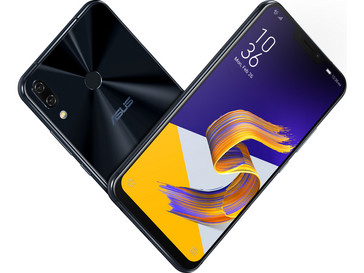As per usual, a wide range of smartphones from manufacturers from all over the world were unveiled or re-introduced during this year’s MWC. The attention was mostly focused on the big-name manufacturers such as Samsung, Huawei and LG. While Huawei decided not to introduce any new smartphones this year, instead unveiling a new notebook and a tablet, LG also only showed off the new versions of its mid-range smartphones K8 and K10 as well as an improved version of the LG V30.
HMD Global and TCL had the largest amount of new products on display. The latter showed off their entire line-up of the entry-level and mid-range smartphones. HMD Global also had plenty of new products to show. As expected, Samsung introduced their latest flagship smartphones, Galaxy S9 and S9+, while Asus unveiled their new ZenFone 5 series way ahead of schedule. Sony also lived up to expectations, introducing the latest Xperia XZ2 and XZ2 Compact. There were also many other products revealed at this year’s MWC.
At this point, we would like to share with you our highlights among the smartphones. We hope that this will give you a better idea of the products that we saw at the MWC. For this, we selected devices from three categories, and we would like to introduce to you two smartphones from each category (the smartphones which left an especially good first impression).
Entry-level Devices – Android Oreo (Go edition) Makes Waves
Android Oreo Go edition is creating waves in the 100-Euro (~$123) price range. This version is actually based on the current version of Android (8.1 Oreo); however, it has been pared down and optimized to run on older, weaker SoCs. Moreover, Google also offers the specially-optimized Go versions of its apps, which are supposed to provide a smoother user experience on low-end devices. That being said, this version does not introduce any limitations to the user experience, because it still supports all the applications from the Play Store.
Here, we discovered two very interesting devices, namely the Alcatel 1X and the Nokia 1. The Alcatel 1X comes with a display with a 2:1 aspect ratio. However, this display features a very low resolution of 960x480. It is powered by a MediaTek MT6739 quad-core CPU with 1 GB of RAM and 16 GB of internal storage (only 11.3 GB is available to the user). The storage capacity can be expanded with a micro SD card. In addition, it features two cameras (one 8 MP, the other 5 MP) and has a 2460 mAh battery. The single SIM variant costs around 100 Euros (~$123); the dual SIM model costs 10 Euros (~$12) more.
The Nokia 1 offers a 4.5-inch display (16:9, 854x480) with a quad-core CPU from MediaTek (MT6737) and 1 GB of RAM. With 8 GB, the internal storage is smaller than that of the Alcatel device. However, it can be expanded by means of a micro SD card. The cameras are also weaker (5 MP; 2 MP). The battery capacity is 2150 mAh. The Nokia 1 is supposed to come to the market in mid April. The price tag is 99 Euros (~$122). Moreover, it is said that it is going to come with a VHF radio receiver and that its back cover is removable.
During our first comparison of the devices, we liked the Nokia 1 more than the Alcatel 1X, because Android Go ran very smoothly on Nokia’s smartphone, whereas Alcatel’s smartphone exhibited occasional stutters. However, this can all change by launch time, because neither device is a final version.
Mid-range Devices – HMD raises the stakes and ZTE surprises
The Nokia 6 (2018) belongs to one of the potential highlights of the event, because it offers a very attractive price-to-performance ratio. With a 5.5-inch display (16:9, IPS, 1920x1080), a highly responsive Snapdragon 630, 3 GB of RAM with 32 GB of internal storage or 4 GB of RAM with 64 GB of internal storage, a 16 MP camera and a 3000 mAh battery, it offers something for everyone. It comes with an MSRP of 279 Euros (~$345). Unfortunately, the LTE modem has been cut down. The Snapdragon chip supports category 12 LTE speeds. However, HMD Global limits the Nokia 6 to category 4 speeds.
The quieter it became around ZTE’s booth the more positive our impression of the new Blade V9 got. The smartphone offers a 5.7-inch display (18:9, 2160x1080 pixels, IPS), a Snapdragon 450, either 3 GB of RAM with 32 GB of storage space or 4 GB of RAM with 64 GB of storage space, a dual camera set-up that offers one 16 MP and 5 MP lens, and a battery capacity that amounts to 3200 mAh. There were no exact details about the LTE speeds. The Snapdragon 450 supports category 7 LTE speeds. Support for VoLTE has already been announced by the manufacturer. The 32 GB version of the ZTE Blade V9 is going to sell for 269 Euros ($333), whilst the larger version will cost 30 Euros (~$37) more. Those who pre-order the device before April 1st will receive a 50-Euro (~$61) discount.
Both devices have their advantages. While Nokia’s smartphone offers better performance, the V9 is going to be faster when it comes to the LTE speeds. Ultimately, ZTE’s smartphone offers quite a deal to those who are going to pre-order it.
High-end Devices – Samsung shows no weakness, Asus takes off the gloves
As expected, Samsung introduced the Galaxy S9 and Galaxy S9+. Visually, the smartphones resemble the previous models very much and come with a faster SoC and a similar amount of memory (4 GB of RAM, 64 GB of storage space). The devices are, again, water and dust-resistant, support wireless charging and they offer a wide array of sensors that leave nothing to be desired. The South Korean giant once again focuses on the camera, which, this time around, has a variable aperture that can switch automatically between f/1.5 and f/2.4. The lighting conditions determine which aperture is automatically selected. The Plus variant also offers a dual-camera set-up with a telephoto lens that has an f/2.4 aperture. Both cameras support image stabilization. Moreover, there is also a new slow-motion mode now, which can shoot video at 960 FPS at 720p resolution. In addition, the S9+ has 6 GB of RAM, and a 256 GB version can be ordered directly from Samsung. The prices for the new smartphones start at 849 Euros (~$1052) and reach up to 1049 Euros (~$1300). In terms of technology, Samsung has pushed the envelope with its new cameras and its smartphones are already among the highlights of 2018 this early in the year.
What was derided by many as an iPhone knock-off was in reality quite an ambitious smartphone. We are talking about the Asus ZenFone 5z here. The notch was further improved upon and is smaller, the smartphone itself is bigger than the iPhone X and offers a 6.2-inch display, the brand-new Snapdragon 845, 8 GB of RAM, 128 GB of internal storage space, a dual camera system with a sensor from Sony (IMX363) and a 120-degree wide-angle camera as well as a 3300 mAh battery. The camera is supported by AI, and the ZenFone 5z offers 16 other AI features, which are supposed to make the user experience easier and better. Asus puts particular emphasis on the fact that the smartphone can learn from its user. However, this learning occurs on the device itself, and this is why, there is no need for a connection to the cloud. An additional strong point is the price, because the high-end smartphone will sell in Germany for 599 Euros (~$742) and internationally for 479 Euros (~$593). However, the international model will feature less storage space. Unfortunately, the device will launch only in July and will reach Germany in the third quarter. This probably has something to do with the limited availability of the Snapdragon 845.
This year, the Samsung Galaxy S9 and the Galaxy S9+ will be the phones that will set the bar for the rest of the competition. The ZenFone 5z seems like an exciting alternative with a relatively lower price tag, if it does not come to the market too late, that is.



